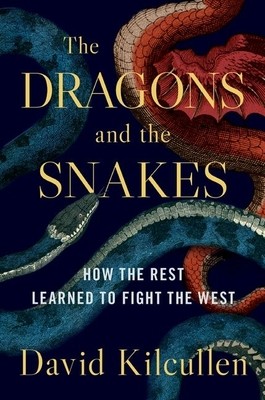
- We will send in 10–14 business days.
- Author: David Kilcullen
- Publisher: Oxford University Press, USA
- ISBN-10: 019026568X
- ISBN-13: 9780190265687
- Format: 16.3 x 23.9 x 3.3 cm, kieti viršeliai
- Language: English
- SAVE -10% with code: EXTRA
Reviews
Description
A counterintuitive examination into how, and what, opponents of the West have learned during the last quarter-century of conflict. Just two decades ago, observers spoke of the US as a "hyperpower"--a nation with more relative power than any empire in history. Yet as early as 1993, CIA director James Woolsey pointed out that although Western powers had "slain a large dragon" by defeating the Soviet Union, they now faced a "bewildering variety of poisonous snakes." In The Dragons and the Snakes, the eminent soldier-scholar David Kilcullen asks how, and what, opponents of the West have learned during the last quarter-century of conflict. Applying a combination of evolutionary theory and detailed field observation, he explains what happened to the "snakes"--non-state threats including terrorists and guerrillas--and the "dragons"--state-based competitors such as Russia and China. He explores how enemies learn under conditions of conflict, and examines how Western dominance over a very particular, narrowly-defined form of warfare since the Cold War has created a fitness landscape that forces adversaries to adapt in waysthat present serious new challenges to America and its allies. Within the world's contemporary conflict zones, state and non-state threats have increasingly come to resemble each other, with states adopting non-state techniques and non-state actors now able to access lethal weapon systems once only available to governments. A counterintuitive look at a vastly more complex conflict environment, this book both reshapes our understanding of the West's adversaries and shows how we can respond given the increasing limits on US power.
EXTRA 10 % discount with code: EXTRA
The promotion ends in 22d.07:52:49
The discount code is valid when purchasing from 10 €. Discounts do not stack.
- Author: David Kilcullen
- Publisher: Oxford University Press, USA
- ISBN-10: 019026568X
- ISBN-13: 9780190265687
- Format: 16.3 x 23.9 x 3.3 cm, kieti viršeliai
- Language: English English
that present serious new challenges to America and its allies. Within the world's contemporary conflict zones, state and non-state threats have increasingly come to resemble each other, with states adopting non-state techniques and non-state actors now able to access lethal weapon systems once only available to governments. A counterintuitive look at a vastly more complex conflict environment, this book both reshapes our understanding of the West's adversaries and shows how we can respond given the increasing limits on US power.


Reviews